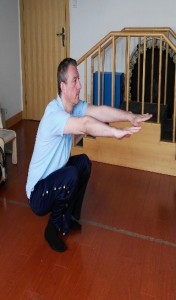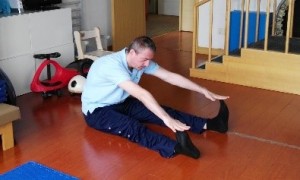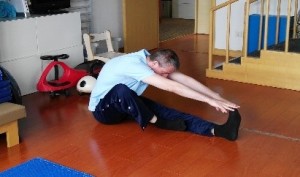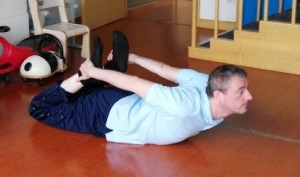During the summer school break most children have more time for activities beyond studying. Among them certainly are sport-related physical activities, which have many proven benefits. Nevertheless, there are some risks and injuries are not uncommon. Therefore, children, parents, and coaches need to pay attention to injury prevention.
Experience shows to us that some things can be done to prevent unpleasant moments (injuries). First of all, young people, particluarly those over the age of 10, who are considering participation in sports activities need to do some self-evaluation. This means that he/she needs to check their present fitness condition; a short running test (2 minutes running at regular speed) or climbing up and down stairs (30-40 stairs), several squats, jumps or similar will be enough to show present state. If a child cannot complete these basic tests than he/she need to improve him/her self before beginning sport-related activities. If those test show to you that you are in good shape, you are going to the next phase.
Before the sport activity:
Warming up is very important. A lot of sports experts around the world highlight the necessity of both warm up and cool down activities. Before every physical activity your body need some preparation. This preparation actually improves body functions (not only loco-motor but cardio, pulmonary ) and trains it for further physical activity. We can divide warm up into two types, static and dynamic. If a child chooses a static warm-up, the streching, proprioception ( routines including strength, balance, agility, coordination) and balance warm up should be done in one position with small movements. Dynamic warm-ups include streching, proprioception , balance and plyometrics (designed for explosiveness, strength, and speed) with the certain amplitude of movements.
Plyometrics (“plyo” for short) used to be called “jump training.” It’s a technique that you can use in many different ways. For instance, you can do plyometrics to help train for basketball, volleyball, tennis, or any other activity that uses explosive movements. You’ll do a series of jumps and hops, like jump squats or one-leg hops. You might jump up and onto a box or bench, or jump over cones. Some moves will be faster than others. Proprioceptive training exercise routines are designed to increase strength, balance, agility, coordination, and prevent sports injuries. Examples of good exercises are: streching hamstrings quadriceps, and pectoral muscles, standing on toes and heels alternately, semi-flexed knee balancing, standing on one leg, changing directions, and jumping on or over objects.
During the Sport activity:
Now you can start the game. During sport activities, if a child notices pain in the limbs, back, or chest, or feeling of weakness, dizziness, or similiar, stop the activity and take a break. With sudden increased intensity of sport, some muscle imbalance may become evident. Strain on the growth plates can also lead to Osgood-Schlatter disease, which can cause a painful lump below the kneecap in children and adolescents experiencing growth spurts during puberty. Osgood-Schlatter disease occurs most often in children who participate in sports that involve running, jumping and swift changes of direction — such as soccer, basketball, figure skating and ballet. While Osgood-Schlatter disease is more common in boys, the gender gap is narrowing as more girls become involved with sports. If you child experiences pain or other symptoms, consult with a physical therapy or orthopedic physician. It is important to remember that hydration of the body is neccessary, especially in this summer months.
After Sport activities:
After sport play/game, cool down is next (not many people like it and do it). Experience shows that cool down helps the body to relax, calm down to the pre-activity level more easily, and certainly helps recovery after activities (fatigue, muscle inflammation, joint irritation). Exercises and duration are the same as in warm up, although there can be differences related to inflammation or pain and should be performed more carefully and slowly. Hydration and supplementation of the electrolytes needs to be done in the following hour to avoid dehydration.













